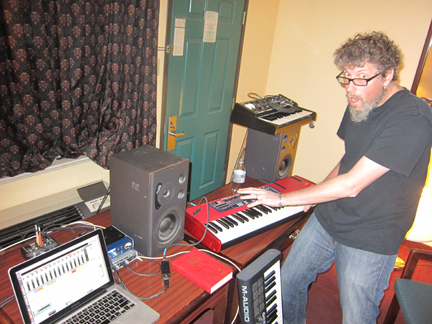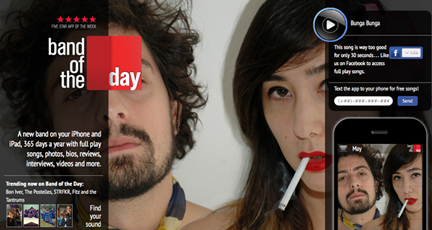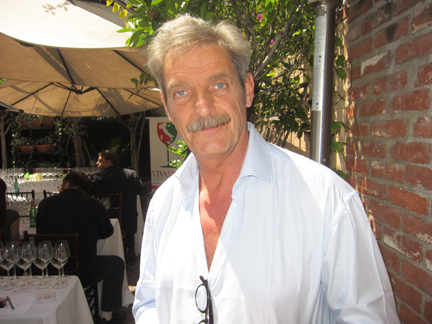
Above: I recently asked legendary Tuscan enologist Carlo Ferrini (and historic consultant at Casanova di Neri) what he considered his great contribution to Italian wine. “I took the traditional role of the Tuscan enologist from the cellar to the vineyard,” he told me.
My brother-in-arms and close friend flying winemaker Giovanni Arcari often asks rhetorically: “How many of the winemakers in Franciacorta actually make their living — their main source of income — from growing grapes and making wine?”
I’ve been thinking about Giovanni and his bleeding heart this morning after reading Alfonso’s superb post on Brunello di Montalcino wherein the latter applies his more than three decades of experience, observation, and wisdom to the situation on the ground in the ilcinese.
Even spanning back to Brunello’s ante litteram era, we discover that even for its founding father Biondi Santi, winemaking was not the primary source of income. In fact, Ferruccio Biondi Santi — Brunello’s nineteenth-century “inventor” — was the scion of a noble family with vast land holdings and immense financial resources. His ground-breaking experimentation in massal selection redefined the appellation. But, in turn, that appellation was defined by a handful of landowners who began to produce a “fine” as opposed to “table” wine following in his footsteps.
It wasn’t until the late 1970s that wealthy northern Italians began to buy property there (and they probably wouldn’t have seen Montalcino as such a choice spot had the British not planted roots there and “manicured” the Tuscan countryside, giving it its idyllic patina that we know today; just ask anyone old enough to remember the second world war what it was like in Montalcino from 1945 through the 1960s when the British began to arrive).

Above: Ask any ilcinese over 50 and they will tell you that it was the British who planted the cypress trees in Tuscany in the 1960s.
Today, just scan the names that define the arc of contemporary Montalcino winemaking: Soldera, an insurance magnate originally from the Veneto via Milan; Illy (Mastrojanni), a coffee mogul from Friuli; Parsons (Il Palazzone), U.S. CEO extraordinaire… and of course, Mariani (Banfi), one of the leading importers of fine wine in the U.S. who went to Montalcino in the hope of creating a sparkling wine legacy and ultimately turned Brunello di Montalcino into a super market brand.
Where there were less than 20 bottlers of Brunello in the 1960s, today there are more than 250 members of the Brunello bottlers association.
To Giacomo Neri’s credit — whether you like the style of wine or not — his family started out with humble farm that Giacomo took over when he returned from his mandatory military service. I know this because I met Giacomo for the first time in 1989 on my second visit to Montalcino, when his wines tasted a lot different from the way they do today. Since his collaboration with enologist Carlo Ferrini began in 1993, his Casanova di Neri label has become one of the most sought-after wines in the world, winning impossibly perfect scores from some of our country’s greatest wine writers (what do Nadia Comăneci, Bo Derek, Ann Colgin, and Giacomo Neri have in common? Hint: it’s not their good looks).
I recently met Carlo Ferrini for the first time in Los Angeles, where he and I spoke on a panel together. I asked him what he felt, over the arc of his career, was his greatest contribution to winemaking in Tuscany.
“Before I began working as a consulting enologist,” he said, “enologists were traditionally tasters.”
“Like Gambelli?” I asked.
“Yes,” he answered. “I was among the first to convince growers to replant their vineyards and to adopt more contemporary farming practices.”
And on the subject of Brunellogate?
“I’ve never believed that Merlot or any other grape should be added to Brunello,” he told me. “In Chianti, I’ve followed a Bordeaux model, using different grapes, grown in different sites, to create blends in line with modern tastes. In Montalcino, the wines have always been 100% Sangiovese. It’s my work in the vineyard that has made the difference. Not in the cellar.”
Whatever Ferrini claims and whatever we believe (and for the record, looking Ferrini in the eye, I believed him), the predominate and guiding style of Brunello has changed in Alfonso’s lifetime and my lifetime.
In the beginning, was the style of Brunello guided by a handful of wealthy families who saw big business opportunities in producing wines that could rival their French counterparts? Is it guided today by a small group of wealthy families who see financial opportunity (and tax-shelter vacation homes) in America’s thirst for wines in the global style?
The answer to these questions lies somewhere in between an alpha, an omega, and a brief window (1975-1993?) when Italy’s cultural prosperity delivered an optimism and fostered a belief that even luxury products should be the expression of the land where they were grown and the people who made them. It just so happens that that’s when Alfonso and I had our first contact with the wines.
If you following along here at Do Bianchi, you already know the Brunello that I like to drink (Il Poggione, Brunelli, Soldera are my top three, whether I can afford them or not). And there will be plenty of time to write and discuss the wines that we love at our house…
Instead, please read Alfonso’s post: The Battle for Brunello. I’m just adding my two cents here…
In other news…
 Today, Italian wine blogger Andrea Petrini, author of Percorsi di Vino, reposted this offer from Albana di Romagna producer Gabriele Succi (left): if you make a donation to one of the officially sanctioned channels for donations for Emilia-Romagna earthquake victims, you can send him a scan of the receipt via email and he will ship you the same value’s worth of his wine. He sweetens the deal by discounting each of his labels by Euro 1 ex cantina. He’s not giving a portion of proceeds to earthquake victims; he’s giving you the wine for donating.
Today, Italian wine blogger Andrea Petrini, author of Percorsi di Vino, reposted this offer from Albana di Romagna producer Gabriele Succi (left): if you make a donation to one of the officially sanctioned channels for donations for Emilia-Romagna earthquake victims, you can send him a scan of the receipt via email and he will ship you the same value’s worth of his wine. He sweetens the deal by discounting each of his labels by Euro 1 ex cantina. He’s not giving a portion of proceeds to earthquake victims; he’s giving you the wine for donating.
Click here for the offer (in Italian) and links to official donation sites.


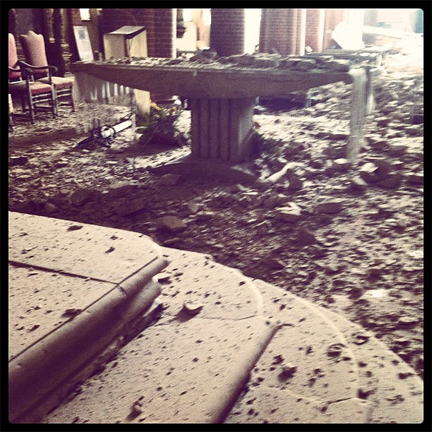
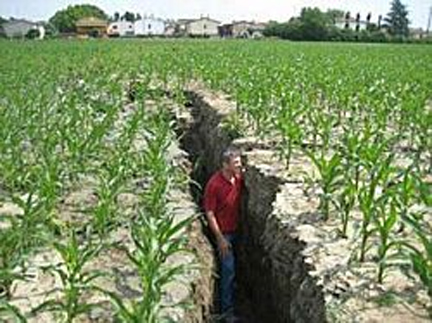
 Of all of Italy’s regions, Emilia and its beauty are perhaps the most challenging for foreigners to understand. Emilia is a land of intellectual and sensual pleasures and partly because it is not a producer of fine wine (aside from a few exceptions like
Of all of Italy’s regions, Emilia and its beauty are perhaps the most challenging for foreigners to understand. Emilia is a land of intellectual and sensual pleasures and partly because it is not a producer of fine wine (aside from a few exceptions like 
